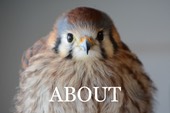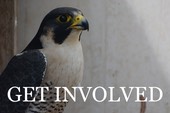Finally, More Releases (11) then Admissions (10)


Releases include this young Swainson’s Hawk, a Western Screech Owl, a House Finch, three Barn Swallows, four Mourning Doves and a Lesser Goldfinch…

The Week in Review
Admissions included a Red-tailed Hawk, three Western Screech Owls, a Great Horned Owl, a Rock Dove, an American Robin, a Mourning Dove and three Common Nighthawks (its that time of year)...

Metabolic Bone Disease (MBD): Red-tailed Hawk 20-504
Every year during baby season we see at least one case of MBD. Birds with this condition are extremely calcium deficient due to poor nutrition. Like all young animals, baby birds need calcium in their diet for basic metabolic functions and for their rapidly growing bones. If there is not enough calcium in their diet for both functions, calcium will be taken from the bones and used for metabolism. The result is weak bones that will not support the weight of the growing bird.
There are numerous abnormalities visible in the radiograph below (poorly formed and/or damaged joints) in addition to the four fractures noted by the arrows. The hawk was found as a downy chick, having been blown from its nest in a storm. Sadly, the finders were told by two wildlife agencies that the nestling was too young to rehabilitate and they should let nature take its course. Instead, they fed it chicken, pinkie mice and steak for three months, not realizing that was a death sentence as well. There is essentially no calcium in a diet of meat. Red-tailed Hawks are able to eat all parts of small rodents, including the bones, within days of hatching. When admitted, 20-504 could not stand normally and could fly only a few feet. The damage caused by MBD is not reversible.
BMW uses hacking, a method that simulates the care the parents would normally provide, to raise young raptors. More than 2,000 Barn Owls and dozens of hawks, American Kestrels and Great Horned Owls have been raised and successfully released since 2006.








